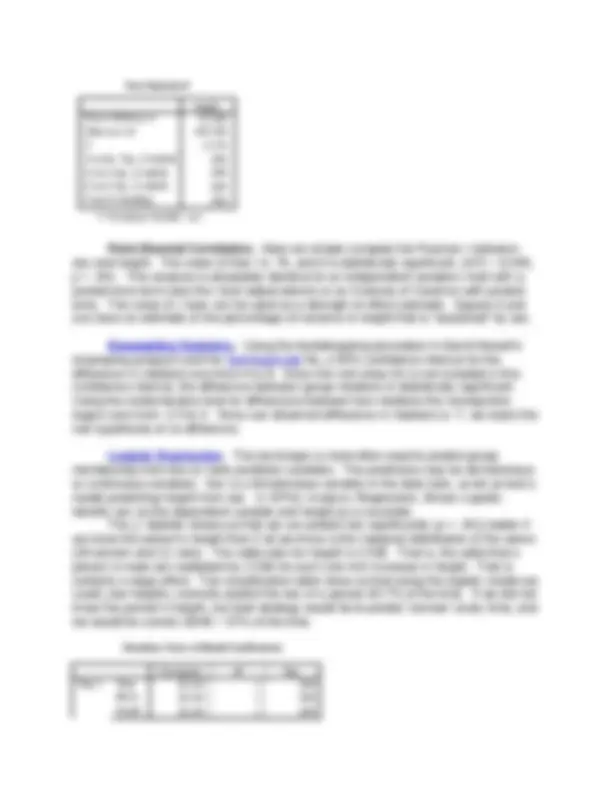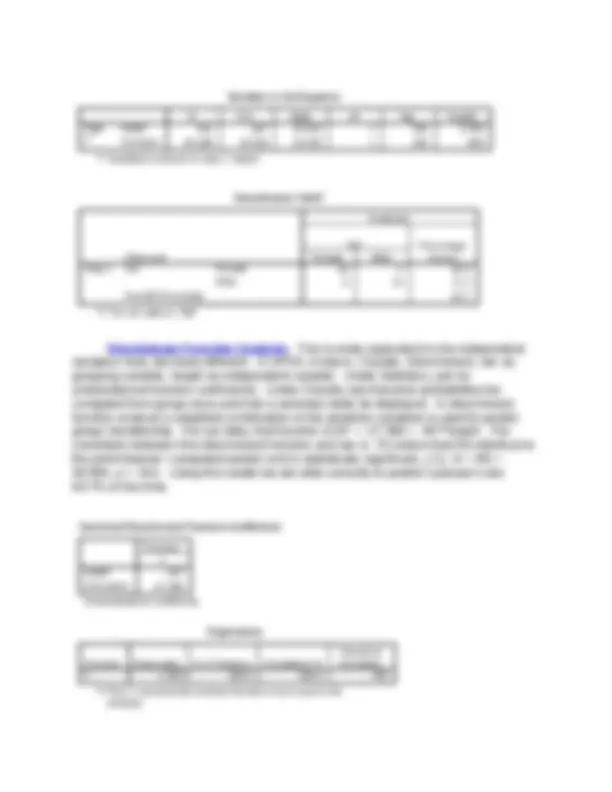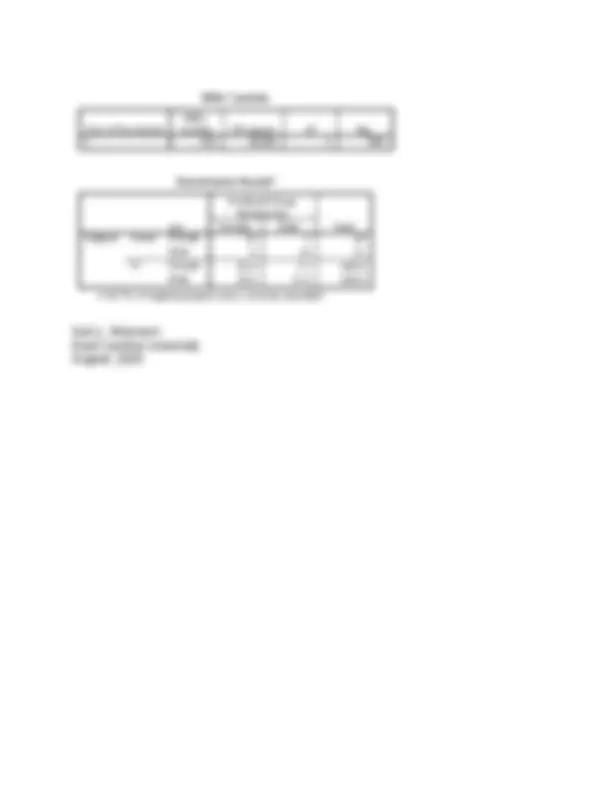





Study with the several resources on Docsity

Earn points by helping other students or get them with a premium plan


Prepare for your exams
Study with the several resources on Docsity

Earn points to download
Earn points by helping other students or get them with a premium plan
Community
Ask the community for help and clear up your study doubts
Discover the best universities in your country according to Docsity users
Free resources
Download our free guides on studying techniques, anxiety management strategies, and thesis advice from Docsity tutors
Material Type: Exam; Class: Visual Editing; Subject: Communication; University: East Carolina University; Term: Unknown 1989;
Typology: Exams
1 / 5

This page cannot be seen from the preview
Don't miss anything!




N = 28 21 SEX Female Male HEIGHT 76 74 72 70 68 66 64 62 60 58
Group Statistics 28 64.893 2.6011. 21 70.571 2.2488. sex Female Male height N Mean Std. Deviation Std. Error Mean Independent Samples Test -8.005 47 .000 -5.6786 .7094 -7.1057 -4. -8.175 45.981 .000 -5.6786 .6946 -7.0767 -4. Equal variances assumed Equal variances not assumed height t df Sig. (2-tailed) Mean Difference Std. Error Difference Lower Upper 95% Confidence Interval of the Difference t-test for Equality of Means
Ranks 28 15.73 440. 21 37.36 784. 49 sex Female Male Total height N Mean Rank Sum of Ranks
Variables in the Equation .931 .287 10.534 1 .001 2. -63.488 19.548 10.548 1 .001. height Constant Step 1 a B S.E. Wald df Sig. Exp(B) a. Variable(s) entered on step 1: height. Classification Tablea 26 2 92. 6 15 71.
Observed Female Male sex Overall Percentage Step 1 Female Male sex (^) Percentage Correct Predicted a. The cut value is.
Canonical Discriminant Function Coefficients . -27. height (Constant)
Function Unstandardized coefficients Eigenvalues 1.363a^ 100.0 100.0. Function 1 Eigenvalue % of Variance Cumulative % Canonical Correlation First 1 canonical discriminant functions were used in the analysis. a.
Wilks' Lambda .423 39.994 1. Test of Function(s) 1 Wilks' Lambda Chi-square df Sig. Classification Resultsa 26 2 28 6 15 21 92.9 7.1 100. 28.6 71.4 100. sex Female Male Female Male Count % Original Female Male Predicted Group Membership Total a. 83.7% of original grouped cases correctly classified.